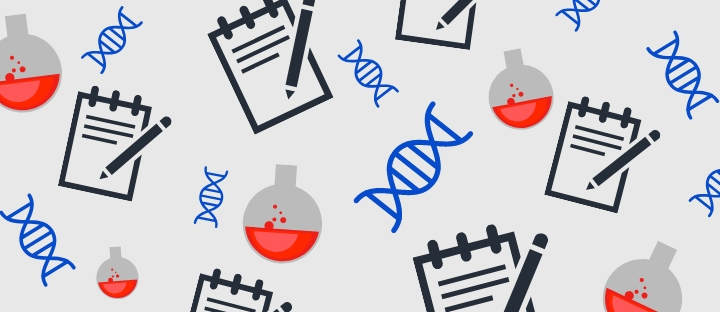#ScienceSaturday posts share exciting scientific developments and educational resources with the KAND community. Each week, Dr. Dylan Verden of KIF1A.ORG summarizes newly published KIF1A-related research and highlights progress in rare disease research and therapeutic development.
KIF1A-Related Research
Whole genome sequencing increases the diagnostic rate in Charcot-Marie-Tooth disease
Charcot-Marie-Tooth (CMT) disease is an inherited disorder that causes degeneration of motor and sensory neurons. Like hereditary spastic paraplegia, CMT is an umbrella disorder, associated with mutations in over 140 genes, but many diagnosed patients do not know their disease-causing mutation.
Screening for CMT genes has advanced in recent years, with panels growing from a few dozen to over 100 genes. Whole genome sequencing can identify additional mutations that aren’t included on CMT panels, providing patients with a more accurate diagnosis to find resources and treatments. In this week’s article, researchers in London reported on Whole Genome Sequencing results for 1515 patients with CMT and related disorders, finding a genetic diagnosis in 76.9% of cases.
The study identified 8 groups based on symptom presentation, and found over 70 disease-associated genes, including 4 patients with KIF1A mutations. 1 patient’s KIF1A mutation was categorized as hereditary sensory neuropathy, while 3 others were categorized as complex neuropathies.
The study also identified other motor proteins, including KIF5A, another kinesin, and DYNC1H1, a dynein, reflecting that shared CMT diagnoses may be caused by overlapping biology. For broader diseases like CMT, expanded genetic sequencing is a gateway to identify cases of rare genetic disorders.
Rare Roundup
Over 1 in 3 people affected by neurological conditions, the leading cause of illness and disability worldwide
KAND is one of many rare disorders, which is why it’s so important to advocate alongside other rare disorders; together, there are many more of us. This is even more true for neurological disorders; according to a recent study by The Lancet, approximately 3.4 billion people were affected by neurological disorders in 2021, making them a leading cause of disability worldwide. While genetic disorders like KAND make up only a small part of this number, this represents the need for increased investment in neuroscience research and clinical development.

